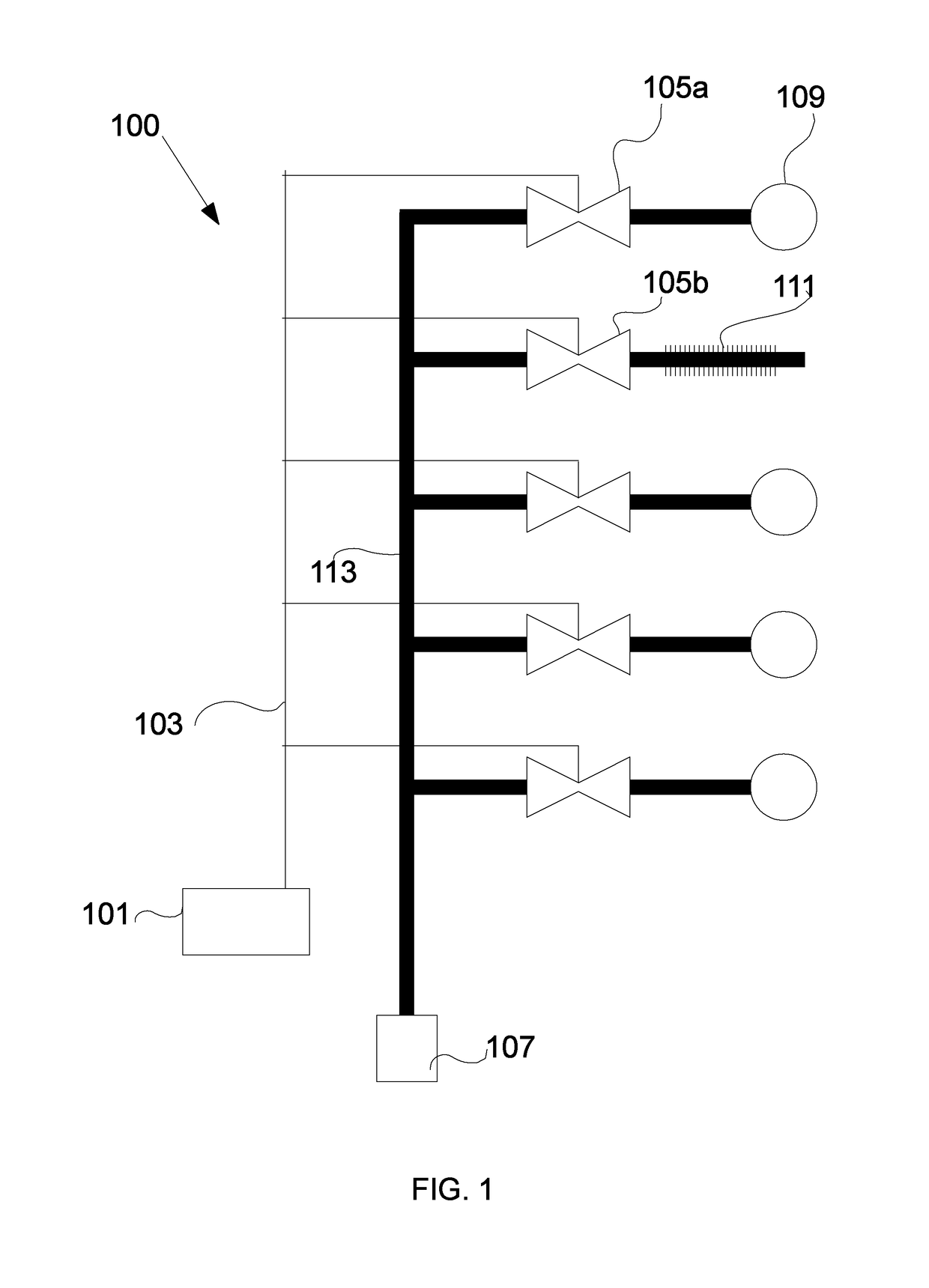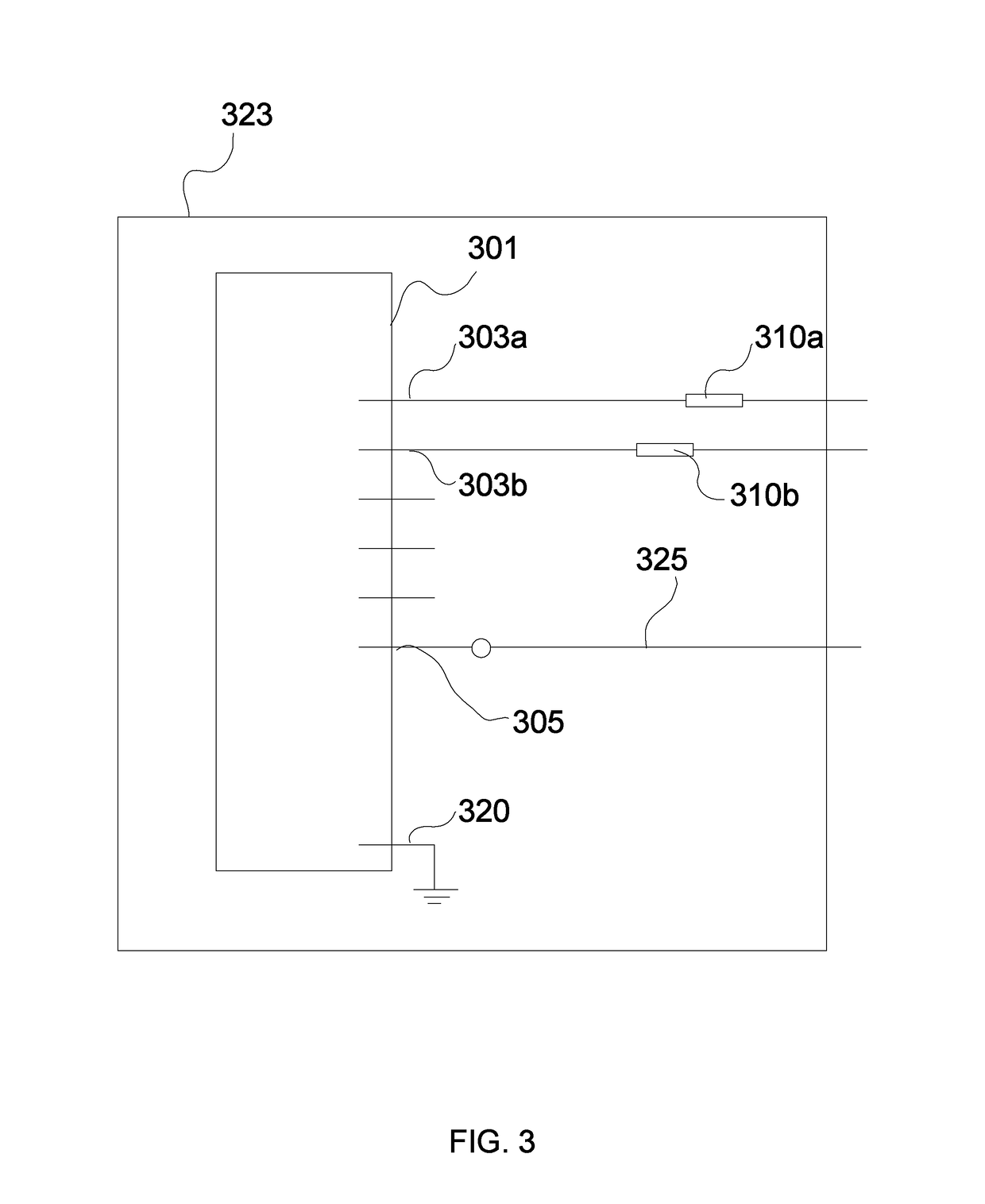Irrigation monitoring system and method for monitoring flow rate into irrigation system to determine the existence or absence of an irrigation fault
a technology of irrigation system and flow rate, applied in the field of irrigation system, to achieve the effect of improving irrigation performan
- Summary
- Abstract
- Description
- Claims
- Application Information
AI Technical Summary
Benefits of technology
Problems solved by technology
Method used
Image
Examples
Embodiment Construction
[0031]Irrigation systems are commonly partitioned into a plurality of zones for various reasons including differences in vegetation, soil, micro-climate, or to provide a lower peak water flow for satisfying restrictions on water delivery (e.g. so as not to exceed a water pumping capacity supplied by a well or a maximum flow-rate of a service line). With reference to FIG. 1, in some embodiments irrigation system 100 has an irrigation controller 101 which connects via wires 103 to remotely located valves 105a and 105b; in some embodiments the valves are located proximate the irrigation controller and water distribution occurs via piping from the valves. The irrigation valves 105a,b are solenoid-actuated and, in some embodiments, control flow using a diaphragm to initiate and terminate watering as determined by the controller. Energy is provided to each valve's solenoid via two conductors: one conductor is commonly shared among multiple valves as a common terminal; the other conductor ...
PUM
 Login to View More
Login to View More Abstract
Description
Claims
Application Information
 Login to View More
Login to View More - R&D
- Intellectual Property
- Life Sciences
- Materials
- Tech Scout
- Unparalleled Data Quality
- Higher Quality Content
- 60% Fewer Hallucinations
Browse by: Latest US Patents, China's latest patents, Technical Efficacy Thesaurus, Application Domain, Technology Topic, Popular Technical Reports.
© 2025 PatSnap. All rights reserved.Legal|Privacy policy|Modern Slavery Act Transparency Statement|Sitemap|About US| Contact US: help@patsnap.com



